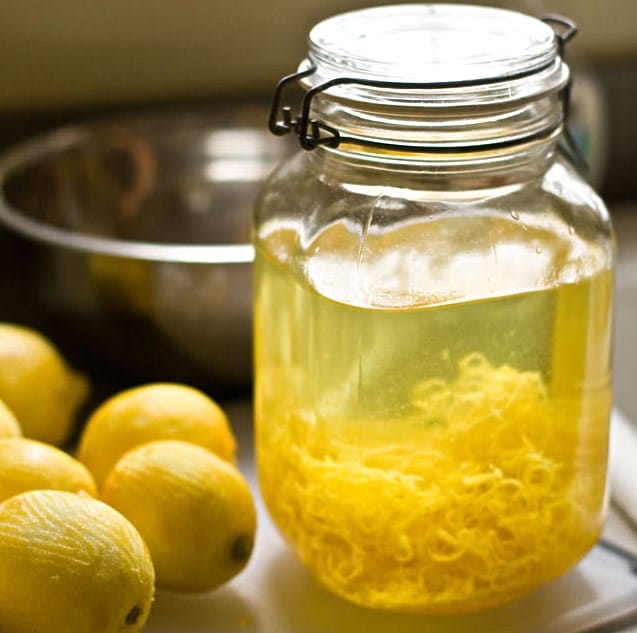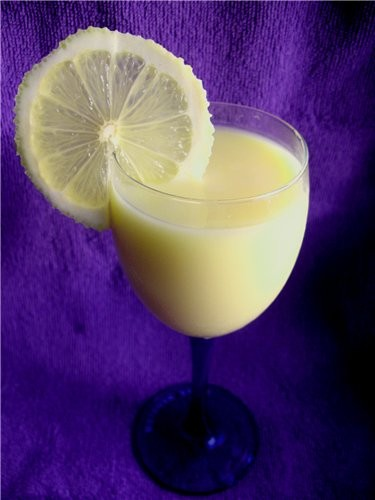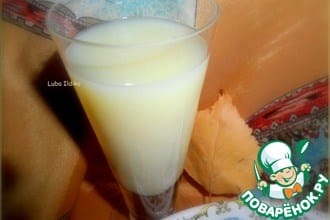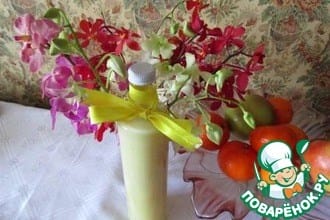What is limoncello
Limoncello is an Italian lemon liqueur. It is made by infusing lemon peels on various alcohol-containing liquids.
Why is it popular in Italy? Because it is in Italy that a large number of these fruits grow. Due to the fact that it is very prepared from ingredients that are always at home and the cooking process does not take much time, homemade limoncello has received well-deserved recognition around the world. In Russia, he is not in great demand. This is due to the fact that it is based on lemons, which are not so popular in our country.
It is produced in the southern part of the country: in Capri, Sicily, Sardinia, Ischia. These cities are currently vying for the title to be considered the birthplace of lemon liqueur. The official version says that his homeland is the island of Capri. It was here in 1988 that Massimo Canale patented not only the technology of its creation, but also the name.
However, the inhabitants of the Amalfi and Sorrento islands do not agree with the accepted version.
They believe that the opaque straw-colored liquid was first produced by their peasants, who called it “alcoholic lemonade.”
Currently, there are several varieties of Italian limoncino liqueur, the name of which contains the name of the city in which it is created. This is Limoncello di:
- Sorento;
- Sicily;
- Capri.
However, no matter what the name of the liquor, all three varieties have common qualities:
- only ripe fruits are taken for them;
- the crusts are infused in pure alcohol in a special way;
- the sugar is used to dress the citrus liqueur.
Structure
Each of the recipes provides:
- Thinly peeled lemon zest in fairly large quantities. In this case, the white part is not touched. That is, to remove the zest, either a vegetable peeler, thinly cutting the skin, or a grater is used.
- Alcohol base. Italians produce limoncello using quality grain alcohol. At home, they often take grappa as an alcoholic base – grape moonshine, an analogue of chacha. We often have recipes with vodka. In principle, this is permissible, because the basis of high-quality vodka is the very grain alcohol. There is also an option with moonshine, but the choice of this product should be approached scrupulously, because the smell of booze (if any) cannot be interrupted, and you will not get limoncello, but an unsuccessful attempt to mask the bad smell and taste.
- Sugar.
- The water is clean and soft.
- There is also a cream liqueur, which contains milk and cream.
Important. Lemon juice and pulp in any form is not used for limoncello.
Firstly, from these components the drink acquires excess acidity and bitterness. Secondly, the shelf life of the liquor is significantly reduced.
How many degrees
Various brands of a store-bought drink differ greatly in both taste and strength, which varies from 15 to 40 °. At home, however, they usually strive for a strength of 25 to 30 °. So that it was pleasant to drink, and the strength was felt.
How and with what to drink Italian liqueur
The main rule of using limoncello is strong cooling.
Italians do not just put a bottle with a drink in the refrigerator, but put it in the freezer. It is said that the liquor does not freeze. But nevertheless, it should be monitored, and it is better to put it for a few hours before use, and not keep it there all the time.
Small elongated glasses of 40-50 grams are also sent to the freezer, no more. Although Italians themselves love to consume lemon liqueur from chilled ceramic cups.
Limoncello is drunk after a meal or served with dessert – fruit, cakes with butter cream, dark chocolate. Moreover, they take small sips, then exhale through the nose, feeling a lemon flavor.
Limoncello is also used for watering ice cream. Liquor is also very popular in cocktails.
Watch a video about the culture of drinking Italian Limoncello liqueur
Shelf life
Limoncello can only be stored for a long time in the cold and without exposure to sunlight, since this leads to spoilage of the product. Lemon peel is very susceptible to light, so not only store, but also infuse lemon liqueur in a place where sunlight does not enter.
The shelf life of homemade limoncello in the refrigerator should not exceed 1 year. It is even better to drink it in 2-3 months.
Attention. The lower the degree of the drink, the sooner it is desirable to drink it.
As for the purchased limoncello, with proper storage (refrigerator, freezer), it does not lose its properties for a year or more.
Tips before starting
-
For limoncello, undiluted alcohol is best (ideally, of course, grape, although in principle, grain will do). Actually, in southern Italy, in the small homeland of the drink, exclusively the aforementioned substance is used.
-
Other culinary and distillery sites feature vodka and moonshine limoncello recipes, but it will be much more difficult to bring them to life.
In the first case, either you will have to significantly reduce the strength of the drink, using the amount of water calculated for pure alcohol, or significantly reduce the volume of the latter, as a result of which you will have to cook a thick syrup that is rather difficult to prepare, which, moreover, will be very difficult to mix with a vodka base …
In the second case, you will have to attend to the quality of the homemade distillate. The slightest presence of fusel oils in the used moonshine can irreversibly spoil the taste and smell of the future liqueur.
General information
Limoncello is the most popular drink among Italians. Its strength depends on the place of manufacture and varies from twenty-five to thirty-seven degrees. The taste and aroma of the liquor depend on how many degrees are in the liquor. Lemons grow in Italy all year round, so every self-respecting beverage manufacturer has its own production technology and recipe for making liqueur.
This drink is most popular in Sicily, Sardinia, Capri, Ischia. It is they who are leading a fierce dispute over the right to be called the homeland of limoncello.
However, lemon liqueur was registered in 1988 on the island of Capri, which became the official birthplace of the drink.
There are many recipes for its preparation, but all of them follow the following rules:
- Only the most ripe and juicy lemons are used for the drink.
- Citrus fruits are soaked in pure alcohol.
- To add sweetness, the liqueur is filled with sugar syrup.
All other parameters of limoncello production are very different from each other. Each region uses its own specific lemon variety for liqueur, which they consider to be the most aromatic. The differences in the recipes also concern the proportions of water and sugar. Each limoncello grower chooses the time for soaking lemons based on family recipes that have inherited from their ancestors.
Such differences allow you to experiment and create your own original taste of the finished drink.
Preparation for work
Before you understand how to make limoncello at home, you need to choose all the necessary ingredients correctly. The taste of the future drink will depend on their quality.
Selection of lemons
The main task in preparation for cooking limoncello is the choice of the main ingredient – lemon. For the future liqueur, this is a paramount task, since different varieties of citrus fruits give their own color and aroma. Oddly enough, but all these parameters do not depend on the pulp of the lemon, but on its peels.
In our latitudes, lemon grows poorly, so it is quite difficult to find really high-quality fruits. However, knowing a few secrets, you can easily choose the best option. Among them it is worth highlighting the following:
- Ripe fruits always have a shiny peel, and unripe ones have a matte skin. To get rid of the wax, you need to dip the lemons in boiling water for a few seconds, and then wipe with a woolen cloth.
- A high-quality and ripe lemon bounces when squeezed, but does not lose its shape. The same cannot be said for overripe fruits. When pressed, they soften and do not return to their original shape. Ripe citrus contains much more vitamins and substances useful for the human body than overripe.
- Lemons are smooth and lumpy. In the latter, the peel is thicker, which under normal conditions is a significant drawback. However, for limoncello, the opposite is true: the thicker the rind, the better.
- There may be small brown spots on the surface of the lemon that only appear when chemicals or antibiotics are used. Such a lemon will be bitter and tasteless.
- The skin of a quality citrus should be difficult to separate from the pulp. If this does not happen, then most likely the lemon was hypothermic or frozen.
- The smell of ripe lemon should be pronounced.
Alcohol variations
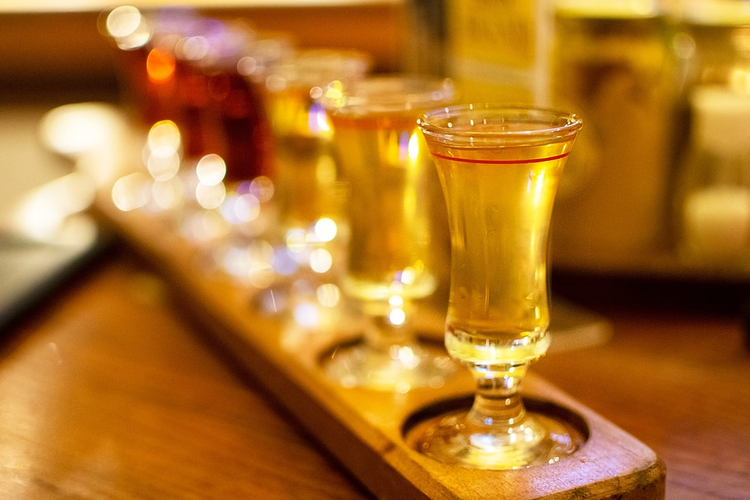 For the preparation of real limoncello, exclusively pure alcohol is used. The same cannot be said for homemade limoncello. The recipe can include any alcoholic beverages from vodka to moonshine.
For the preparation of real limoncello, exclusively pure alcohol is used. The same cannot be said for homemade limoncello. The recipe can include any alcoholic beverages from vodka to moonshine.
If you have the desire and opportunity to prepare liqueur according to a real Italian recipe, then do not miss this chance.
Such a drink will turn out to be much more tasty and aromatic, and the negative consequences of its consumption will be minimized.
Cooking recipes
Making lemon liqueur at home requires few ingredients, but a lot of patience and endurance. In most cases, the drink is aged for about two weeks, or even more, and it is not a fact that the finished product will taste perfect. Therefore, before taking on the preparation of limonella, you need to think several times and weigh all the risks.
Classic on alcohol
The classic homemade limoncello recipe for alcohol involves the use of a medical 96-degree liquid. You can choose lemons based on your taste and capabilities. To prepare lemon liqueur, you need to take: 1 kg of ripe citrus fruits, 0.5 liters of alcohol, 0.5 kg of granulated sugar, 0.65 liters of distilled water.
The process of preparing a drink according to the classic recipe is simple and consists of the following steps:
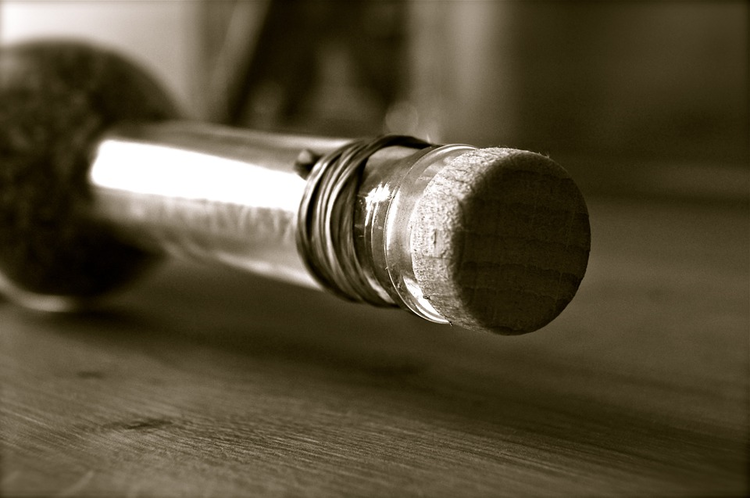 Lemons are thoroughly washed and dried.
Lemons are thoroughly washed and dried.- The zest is removed from them without a white partition between the peel and pulp. This can be done with a vegetable peeler or grater.
- The zest is transferred into a specially prepared container with a tight-fitting lid.
- After that, alcohol is poured and the can is tightly closed.
- To insist, the future drink is transferred for a week to a dark and at the same time dry place. In some recipes, you can find aging for six months. The masters of the drink claim that this will improve the aroma and make the taste more intense and citrusy.
- The jar is shaken every day to mix its contents. This is done at least four times a day.
- After the planned aging period, the container is opened, and the tincture is filtered. The crusts remaining at the bottom of the can are squeezed out of the liquid.
- To prepare the syrup, water and sugar are mixed in a saucepan.
- The liquid is placed on the stove and heated until the granulated sugar is completely dissolved.
- Without bringing to a boil, the fire decreases and the foam formed on the surface of the syrup is removed.
- The syrup is left to cool completely, and then poured into a lemon blank. The result is a slightly cloudy liquid.
- The finished product is bottled and refrigerated.
- There it is stored for about a week, after which the limoncello will be ready.
See also: Mushroom soups for dinner: recipes with fried and salted mushrooms
The finished drink has a strength of about thirty-five degrees. If you want a less strong product, you can increase the amount of water used.
Homemade on moonshine
To make limoncello on moonshine, you must use only the highest quality product. The “fiery” liquid must undergo double distillation and purification. To make homemade liqueur, you need the following ingredients: one kilogram of lemons, a liter of moonshine, 300 g of granulated sugar (if you want to get a sweeter drink, you can take half a kilogram of the product), 300 ml of pure water, juice of one lime, saffron, vanilla.
This limoncello is prepared as follows:
- Lemons are scrubbed off the wax and washed well.
- A thin layer of skin is removed from them. It is important not to touch the white part between the zest and the pulp. If it gets into the drink, it will make it bitter and tasteless.
- The prepared zest is poured with moonshine.
- Water is poured into a saucepan and brought to a boil. Sugar is added to it, after dissolving which, the syrup is removed from the stove.
- As much juice as possible is squeezed out of two lemons.
- Cooled syrup and freshly squeezed lemon juice are added to the zest and moonshine.
- The container is tightly closed, shaken and put away in a cool dark place for two or three weeks.
- Every day, the bank is taken out and shaken.
- After three weeks of waiting, the liquor is filtered through a gauze rolled in several layers.
- Vanilla, saffron and the juice of one lime are added to limoncello. Spices should be used in a minimum amount so as not to overpower the taste and aroma of the drink.
- Lemon liqueur is refrigerated for three days.
- After that, it is strained and bottled again.
Liquor on vodka
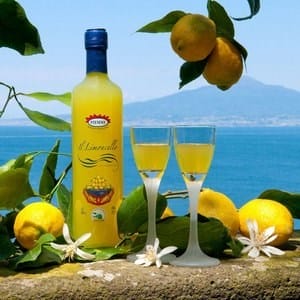 In this recipe, in addition to the zest, citrus pulp is also used. Any lemons are suitable for the drink, from which you can make limoncello. The recipe for vodka provides for the use of such products: 500 ml of vodka, 500 g of lemons, 400 g of sugar, 150 ml of pure water.
In this recipe, in addition to the zest, citrus pulp is also used. Any lemons are suitable for the drink, from which you can make limoncello. The recipe for vodka provides for the use of such products: 500 ml of vodka, 500 g of lemons, 400 g of sugar, 150 ml of pure water.
Vodka-based limoncello recipe:
- Thoroughly washed lemons are dipped in boiling water and boiled there for at least three minutes. This operation will help soften the citrus fruits.
- After cooling, the lemons are cut into large slices. All the juice is squeezed out of them, and the remains are crushed.
- The chopped leftover lemon is placed in a prepared jar and poured over with vodka.
- The jar is closed and put away for several days in a cool place.
- In a saucepan, water is heated with the addition of granulated sugar and lemon juice. After the sugar is completely dissolved, the container is removed from the stove and cooled.
- Squeezed lemon juice is poured into a saucepan with syrup and put into the refrigerator.
- After a week, the ready-made syrup is added to the tincture and put in the refrigerator for a week.
- The finished limoncello is filtered and bottled.
Useful tips and ways to consume
To get the most out of limoncello, you need to consider the advice of professionals. All of them have been repeatedly tested by experience and approved by generations. Among the tips are the following:
- Lemon drink manufacturers advise adding a cinnamon stick along with the peel. This will enrich the liqueur with aroma and give it a unique taste.
- To change the color of the finished product and give it a greenish tint, you need to use one green lemon for every six yellow ones. In the same way, you can get an orange tint, only instead of a green lemon, an orange will be used.
- Limoncello can be stored in the refrigerator or cellar for a maximum of six months.
- When storing the finished liqueur for a long time, you need to place the drink in the freezer and freeze it.
As a rule, Italians drink limoncello frozen (after a long exposure in the freezer). Therefore, a few hours before the arrival of guests, it is necessary to place glasses and a bottle with a drink in the freezer. Liqueur is drunk in one gulp or can be used to prepare a wide variety of cocktails that are drunk slowly and measuredly.
Limoncello is one of the most interesting and aromatic drinks. He is loved not only in Italy, but all over the world. Thanks to the right approach and preparation, you can get a perfectly balanced taste that will appeal not only to you, but also to your guests.
Limoncello: the original recipe
To begin with, we will focus on how to make limoncello according to the most, that neither is the canonical recipe. As mentioned above, the amount of sugar and water can be varied to your liking. If you follow the proportions given here, the output will be a liquor, whose strength will be approximately 35-38 degrees, and the amount of sugar will be 30 g per 100 ml of liquid, which in the case of a homemade variety of drink is considered almost a classic.
Ingredient List
-
Ripe fragrant lemons – 1 kg
-
Food alcohol (95-96 degrees) – 500 ml
-
Still drinking water – 650 ml
-
Sugar – 500 g
Cooking method
-
Pour boiling water over the lemons. Brush off the wax used for storing fruit with a vegetable brush or a dense, rough cloth.
-
Carefully remove the yellow part of the zest with a knife for peeling vegetables (if the white subcortex gets into the drink, the liquor will taste bitter).
-
Transfer the peel to a jar, pour in alcohol and close with a tight lid (peeled lemons can be safely used for other household purposes). Keep the container in a cool, dark place for a week, shaking it vigorously a couple of times a day.
-
Strain the alcohol through cheesecloth and squeeze the zest into it. Then, pour the zest with water and leave in this form for two hours. After that, strain the water thoroughly and use it to prepare the syrup.
-
The syrup, consisting of water and sugar, can be prepared according to the classics: keep it over low heat until the crystals are completely dissolved, without bringing the substance to a boil; or you can boil, vigilantly removing the foam (the second method will slightly increase the shelf life of your drink, ridding it of various unwanted microorganisms). You can find the proportions and variations of the sugar syrup here.
-
Cool the resulting syrup to room temperature and mix with alcoholic infusion (turbidity of the drink will only indicate the absence of artificial emulsifiers in it). Strain and bottle the almost finished liqueur, then let it ripen for a week in the refrigerator, vigorously shaking the containers once a day. In the future, the drink should also be stored in the refrigerator.
Homemade Italian Limoncello
This recipe was shared with us by a subscriber living in Italy. According to him, real limoncello is made from Verdelli green lemon – a special kind of citrus that is distinguished by its bright green color and the same bright and strong citrus aroma.
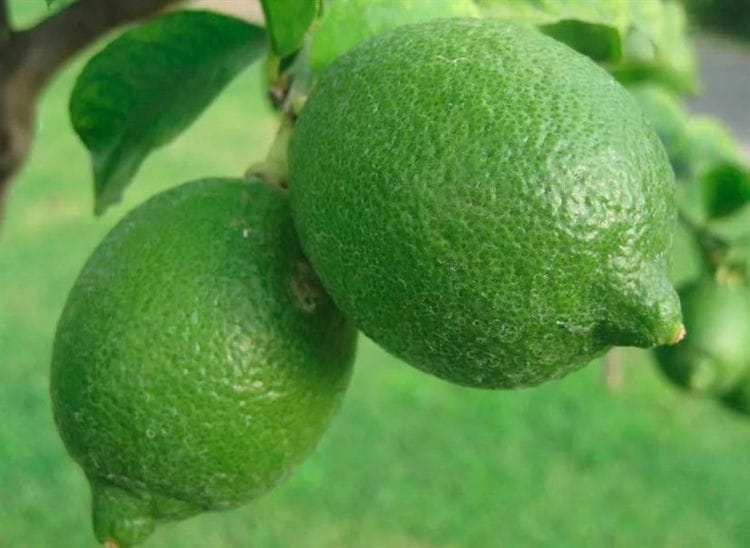 The best liqueur comes from a variety of green lemons that ripen in the fall. It is important to understand that they remain green even when fully ripe.
The best liqueur comes from a variety of green lemons that ripen in the fall. It is important to understand that they remain green even when fully ripe.
Ingredients:
- water – 700 ml;
- lemons – 600 g;
- moonshine (95%) – 500 ml;
- sugar – 250 g
Cooking technology
- Rinse lemons and pat dry.
- Cut the zest from the lemon in any convenient way. We try not to touch the white film, it will only damage the drink. Chop the zest into small pieces.
- Pour moonshine into a sealed vessel and pour the zest. We remove in a dark place for 3 weeks to infuse.
- Cooking syrup: for this we mix sugar and water, boil until sugar dissolves.
- We are waiting for the syrup to cool and pour it into a container with an infusion of moonshine and zest. We close and remove for another 15 days in a dark place.
- After 15 days, we take out the finished drink, filter it and dilute it to a drinking strength of 35-40%. Limoncello is ready.
It is unlikely that you will have a couple of kilograms of Sicilian lemons on hand. But, as the subscriber claims, even from ordinary lemons, the liqueur prepared according to this recipe turns out to be very surprisingly aromatic and with a full bright taste. So go for it! Experiment and discover new things!
Creamy limoncello recipe
The main trick for preparing this drink is to use skim, at most, two percent natural (not powdered) milk, in order to avoid its clotting when it comes into contact with alcohol. If you believe some especially seasoned alcohol makers, such milk can be completely painlessly mixed in a 1: 1 ratio with cream. But to be honest, I would not risk it.
Ingredient List
-
Lemons – 10 pcs.
-
Alcohol – 750 ml
-
Milk – 1.9 L
-
Sugar – 1 kg
-
Vanilla – ½ pod (can be replaced with 20-30 g of vanilla sugar or 2 teaspoons of vanilla extract).
Cooking method
-
Until the moment of straining the alcoholic infusion and squeezing the zest, inclusive, you can be guided by the previous recipe.
-
Next, you should immediately throw out the squeezed zest and start preparing the syrup, which includes: milk, granulated sugar and half a vanilla pod. In this case, it is necessary to boil the milk over low heat until the sugar is completely dissolved.
-
After that, cool the syrup to room temperature, strain it and combine it with an alcohol base, pouring lemon alcohol into a milk-sugar solution.
-
Mix the result very thoroughly, filter it once more and pour it into bottles without filling them to capacity.
-
The finished liquor is stored in the refrigerator for up to three months.
PS Some craftsmen suggest not to bother with syrup, but simply to mix an alcohol base and a can or two of condensed milk in a blender, adding vanilla sugar there. But consider that I did not tell you this.
Limonovka liqueur recipe
To get a highly concentrated product, you can take a larger amount of zest (from 6-8 lemons) and let the fruit-alcohol mixture sit warm for a day, and add sugar syrup just before filtering and bottling. In any case, only the yellow part of the skin is used, the fruit is thoroughly washed and poured over with boiling water before cooking.
Ingredients
-
Lemon – 3 pcs.
-
Sugar – 1 kg
-
Water – 0.5 l
-
Alcohol – 1 l
Cooking method
-
Cut the peel removed from the lemons into thin strips or cubes, pour into a glass vessel, pour in the alcohol.
-
Mix water and sugar, brew the syrup, wait until it cools, carefully add to the fruit mass, stirring constantly.
-
Seal the jar with a lid and leave the mass to infuse for 1 month.
-
Stir the drink well, filter, distribute into small bottles.
Classic lemon liqueur
The amount of fruits depends on the size: if large – 1-2 pieces are enough, small ones need more. Wash and scald the fruits.
Ingredients
-
Lemon – 1-4 pcs.
-
Water – 0.6 l
-
Vodka – 0.5 l
-
Sugar – 300 g
Cooking method
-
Cut and chop the top (yellow) part of the lemon peel, put in a bowl and pour in the vodka.
-
Squeeze the juice from the fruit pulp, add to the crusts.
-
Leave the mass to infuse for 2 weeks, filter.
-
Boil the thick sugar syrup, wait until it cools, strain and combine with the tincture.
-
Pour into small vessels, seal tightly, let it brew for another 2 weeks.
Lemon-coffee liqueur recipe
It is better to take one large fruit, otherwise you will need 2-3 small ones.
Ingredients
-
Vodka – 0.7 l
-
Lemon – 1 pc.
-
Coffee beans – 33 pcs.
Cooking method
-
Wash the lemon thoroughly, cut 33 holes in it and put the coffee beans inside.
-
Place the fruit in a jar, fill it with vodka, seal with a lid, leave to infuse for 33 days.
-
Strain the liquid, filter, pour into a prepared vessel. Done.
Lemon ratafia
The drink is also called “fruit vodka”. If desired, the amount of sugar and water is halved to obtain a less sweet product.
Ingredients
-
Lemon – 5 pcs.
-
Sugar – 0.5 kg
-
Water – 0.5 l
-
Alcohol – 1 l
Cooking method
-
Cut the lemon peel into strips, pour into a jar, pour in alcohol.
-
Brew a thick syrup from water and sugar, after cooling, stirring it, add it to the fruit infusion.
-
Cover the vessel with a lid, let the mass saturate for about 1 month.
-
Stir again, strain and pour into small bottles.
Homemade French liqueur
French liquor can be used to make mixed drinks. Grog and tea with French liqueur are especially tasty. French chefs, in addition, season sauces with such liqueur, add it to the syrup for impregnating cakes, and prepare exceptionally aromatic jelly on it.
Dessert wine Lemon Sugar
Lime liquor, homemade recipe
Category: Beverages Alcoholic drinks Light alcohol
One of the most aromatic and citrusy liqueurs I have ever made. It will be very useful for cocktails.
Lime zest Lime Alcohol Water Sugar Mint
Lemon cream-liqueur “Сrema-licor de limon”
Category: Beverages Alcoholic drinks Light alcohol
A sweet, viscous creamy liqueur with a citrus base – what else is needed on a cold autumn evening …
Liqueur “Lemon Cream”
Category: Beverages Alcoholic drinks Strong alcohol
Spring is freshness, awakening feelings and desires, striving for beauty, the warmth of the spring sun, the greenery of the first grass, the aroma of blooming gardens. Italy. Blooming lemon trees. Intoxicating aroma of spring. There they already have a real spring. And we will prepare the famous Italian liqueur, it will just ripen in time for our real spring, by May. This Crema di limone liqueur is significantly softer than the most famous lemon liqueur limoncello, but has the same rich, fresh, spring lemon aroma.
A few words in conclusion
Over the 100 years of the existence of the liqueur, several noteworthy modifications have appeared in his homeland, prepared according to the same principle. Among them:
-
Fragoncello – infused with chopped strawberries;
-
Meloncello – cantaloupe melon pulp is used;
-
Pistachiocello – prepared using crushed pistachio kernels.
There is also a Sicilian limoncello made from oranges, more precisely, arancello. However, it is prepared in a slightly different way, therefore, it should be considered as a separate drink, albeit akin to our liquor.
Sources used and useful links on the topic: https://alconation.ru/likery/limonchello https://zen.yandex.ru/media/posamogonu/chto-takoe-limonchello-i-domashnie-recepty-prigotovleniia-5d16e36f8dd02200ad24abea https: //vzboltay.com/alcohol/liqueurs/481-limonchello-recept.html https://sovety.guru/eda/prigotovlenie-limonchello https: //xn--80aalwclyias7g0b.xn--p1ai/articles/recept_limonchello https: / /vzboltay.com/alcohol/liqueurs/1201-limonnyy-liker.html https://www.povarenok.ru/domashnie-napitki/limonnyj-liker-recepty/

